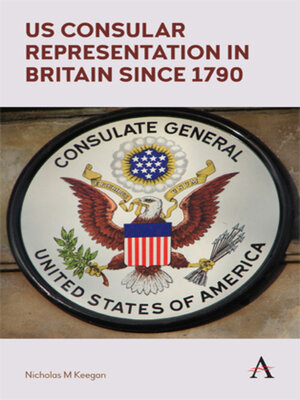
Sign up to save your library
With an OverDrive account, you can save your favorite libraries for at-a-glance information about availability. Find out more about OverDrive accounts.
Find this title in Libby, the library reading app by OverDrive.



Search for a digital library with this title
Title found at these libraries:
| Library Name | Distance |
|---|---|
| Loading... |
In its early years the United States Consular Service was a relatively amateurish organization, often staffed by unsuitable characters whose appointments had been obtained as political favours from victorious presidential candidates—a practice known as the Spoils System. Most personnel changed every four years when new administrations came in. This compared unfavourably with the consular services of the European nations, but gradually by the turn of the twentieth century things had improved considerably—appointment procedures were tightened up, inspections of consuls and how they managed their consulates were introduced, and the separate Consular Service and Diplomatic Service were merged to form the Foreign Service. The first appointments to Britain were made in 1790, with James Maury becoming the first operational consul in the country, at Liverpool. At one point, there was a network of up to ninety US consular offices throughout the UK, stretching from the Orkney Islands to the Channel Islands. Nowadays, there is only the consular section in the embassy and the consulates general in Edinburgh and Belfast.
|The book is meticulously researched, drawing mainly on archives in the United States and Britain and includes previously unpublished photographs. It is in three parts. Part I begins with a reminder of the early days of American independence and the formation of the new nation and is a useful backdrop to the rest of the book. This was a period of rapid growth which saw the creation and development of the State Department and the Consular Service. Accounts are given of the frequent legislative changes, the major weaknesses of the early Consular Service, the Spoils System which ensured that political allies or presidential fundraisers were appointed as consuls, the calls for reform, how the Consular Service lost its separate identity in 1924 when it merged with the Diplomatic Service to form the unified Foreign Service, and the amalgamation of the State Department and the Foreign Service in 1954.
Parts II and III form the major section of the book. Part II concentrates on the consulates and the people who served in them in Britain and pre-independence Ireland and is an overview of the American consular presence from 1790 to the present day. Topics covered include the wide-ranging extent of the consular network, British nationals who served as American consuls, consular families, office accommodation, furnishings and equipment of consulates, espionage activities conducted by the consuls in Britain during the American Civil War, how Texas and Hawaii had consulates in Britain before they became States of the Union, inspections of consulates, the dangers faced by consuls during the First and Second World War blitzes, and the lengthy attempts by women to become consuls and diplomats.
Part III consists of detailed histories of consulates in fifteen towns. These include the dates on which the offices were operational, short biographies of staff who served in them and an indication of their routine activities, including a few noteworthy incidents or highlights. The accounts are of varying length reflecting the duration of the consulates' presence. The extent and scale of the former consular network can be appreciated from the list of locations and categories of consular offices shown in the Appendix. The book concludes with a review of how the consular function has evolved and kept pace with changing demands and needs. Although the Spoils System now exists for only one consular appointment, at a post which is not in the UK but is within the London embassy's remit, it still thrives in those embassies where career consuls and diplomats report to an...







